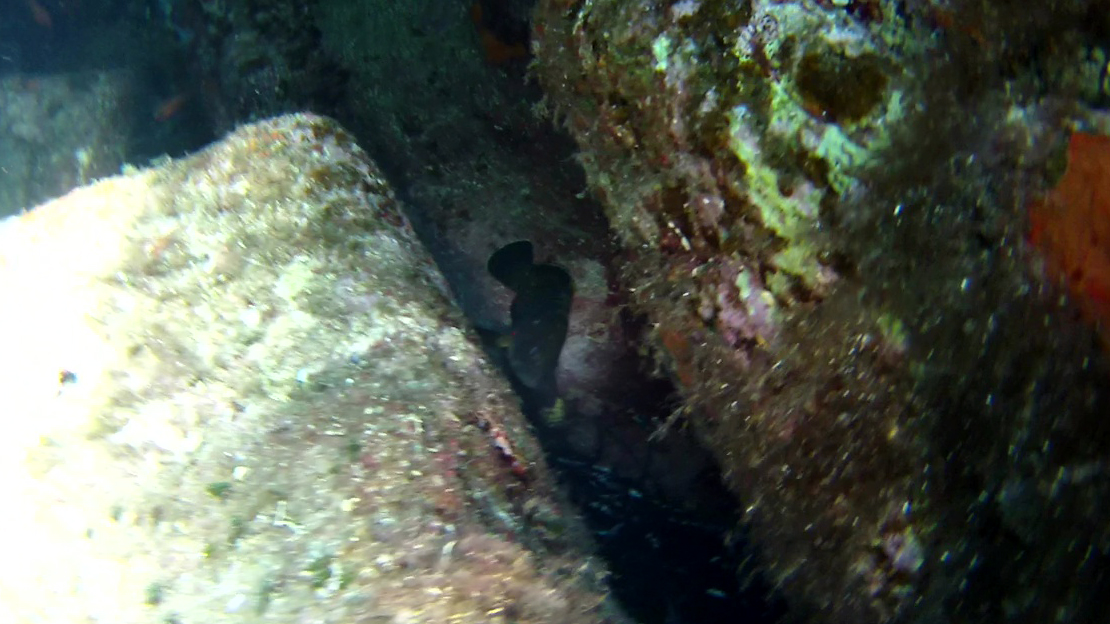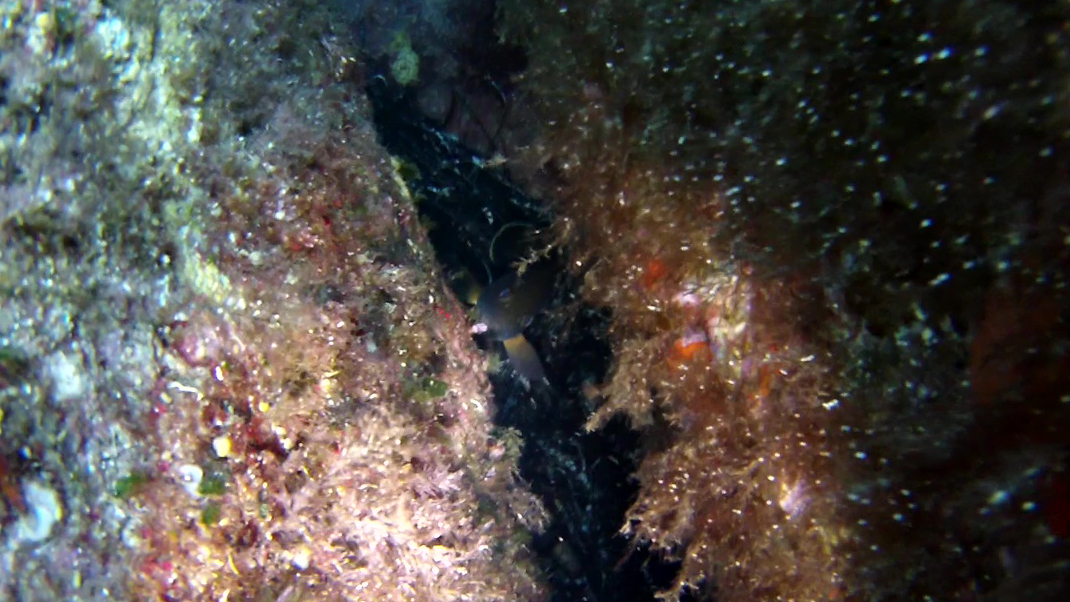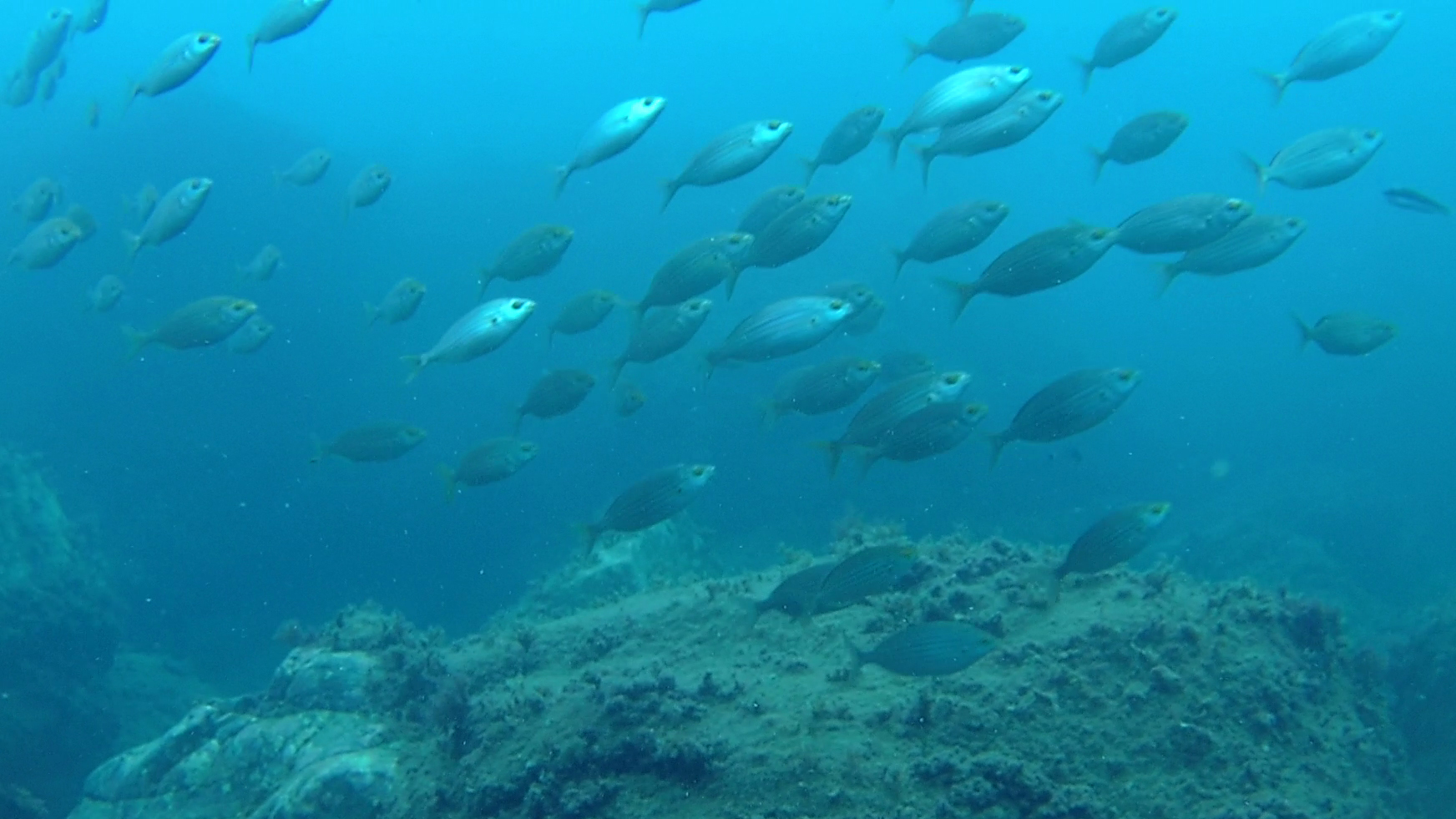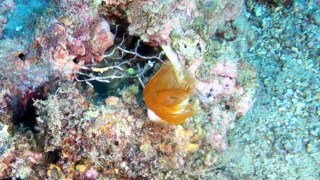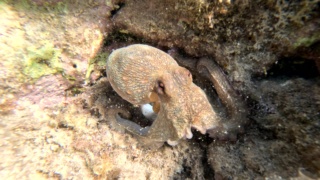The protected marine natural area Capo Carbonara is a protected natural area that is located in south-eastern Sardinia, in the Tyrrhenian sea area that goes from Capo Boi to the area in front of the Serpentara island. Intotheblue.it Capo Carbonara protected natural area Sardinia Sardegna
Its area of almost 86 square kilometers is divided by the quadrants: A, B and C. In the marine protected area, in addition to the promontory of Capo Carbonara, the island of Cavoli, the shoal of Berni (in the area of the sea in front of Villasimius between the Cavoli island and the Serpentara island), the shoals of Mezzo and Libeccio (south of the Cavoli island), the shoal of Santa Caterina to the west of the homonymous cove and the shoal of Pescatelli in the sea area in front of Sarux port.
In this video we are on the Santa Caterina shoal and we found a specimen of Dusky Grouper that was allowed to be filmed for a few minutes. Intotheblue.it Capo Carbonara protected natural area Sardinia Sardegna
Many serranid species are brightly colored, and many of the larger species are caught commercially for food. They are usually found over reefs, in tropical to subtropical waters along the coasts. Serranids are generally robust in form, with large mouths and small spines on the gill coverings. They typically have several rows of sharp teeth, usually with a pair of particularly large,canine-like teeth projecting from the lower jaw.
All serranids are carnivorous. Although some species, especially in the Anthiadinae subfamily, only feed on zooplankton, the majority feed on fish and crustaceans. They are typically ambush predators, hiding in cover on the reef and darting out to grab passing prey. Their bright colours are most likely a form of disruptive camouflage, similar to the stripes of a tiger.
Many species are protogynous hermaphrodites, meaning they start out as females and change sex to male later in life. They produce large quantities of eggs and their larvae are planktonic, generally at the mercy of ocean currents until they are ready to settle into adult populations.
Typically groupers live in their lair, where they feel safe, and go out to get food and check the territory.
 English
English Italiano
Italiano

